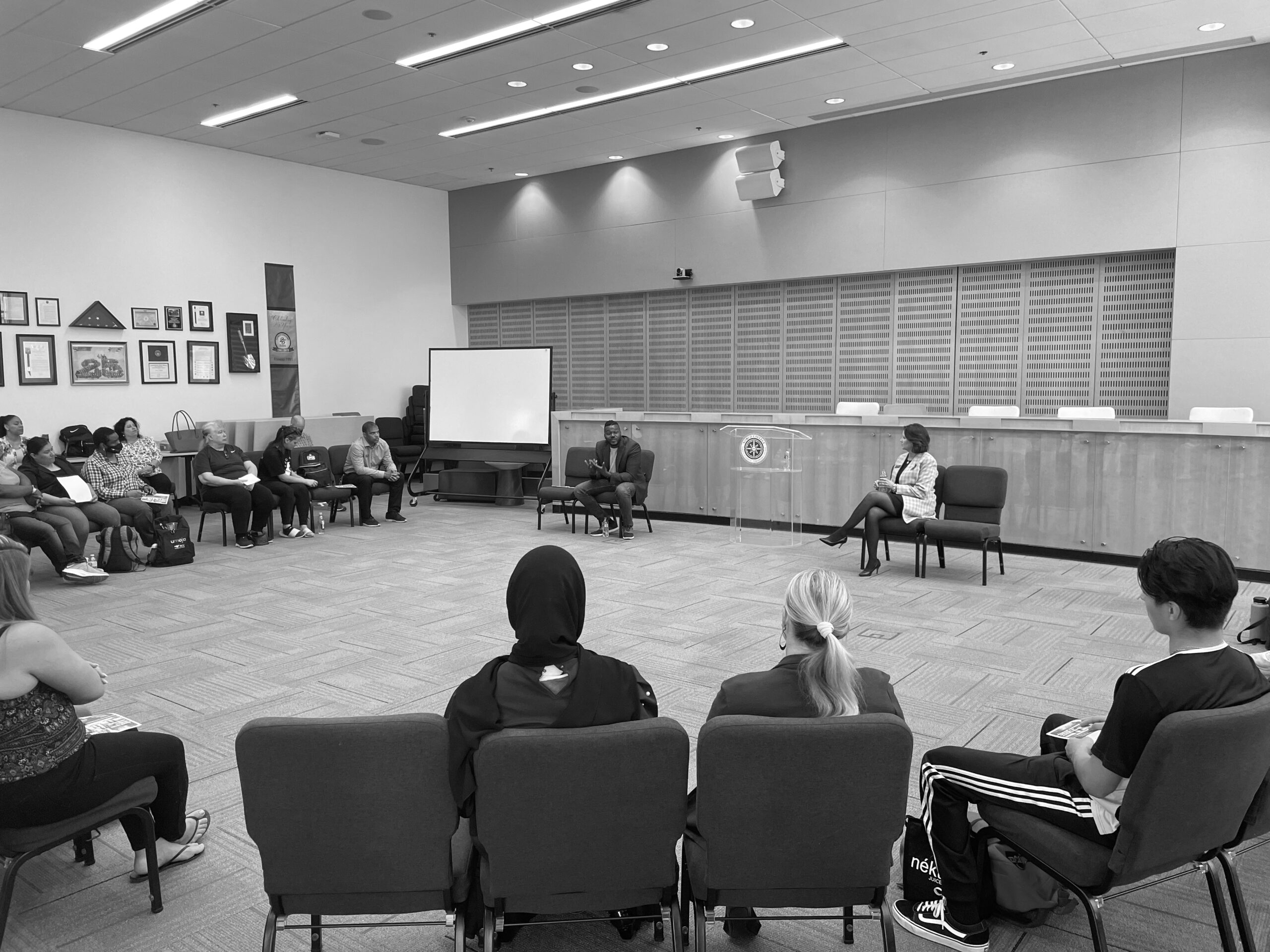Category: Housing, Justice, Listening Sessions, Personal Stories, Poverty News & Policy Updates, The Safety Net, Wealth Building, Work

May 18th, 2022
Michael Tubbs is the Founder of EPIC and the former Mayor of Stockton.
Most people are probably not aware that in California, students attending our 4-year institutions are eligible for financial aid that includes allowances for housing and food, but community college students—disproportionately poor and people of color—are not. Part of the reason for this inequity might be that when legislators and others envision community colleges, they think of young people attending school while living at home with parents who cover their expenses.
But today’s community college isn’t your grandpa’s community college.
Last week, I had the privilege to meet with 35 students at Norco College along with the President of the school, Dr. Monica Green. Located about 40 miles east of Los Angeles, Norco College is one of three schools in the Riverside Community College District. It is among the 116 colleges that make up The California Community Colleges (CCC)–the largest system of higher education in the nation, serving about 2 million students annually.
What I saw at Norco College—just as I had seen at Compton College—is a microcosm of the people in our state and the issues we face.
This multi-generational, racially diverse student body is composed of young people, parents, people attending school while working multiple jobs, people caring for extended families, former foster youth—all trying to get on a path to mobility while struggling to afford transportation, food, and, especially, housing.
A mother with three kids who divorced in 2016 said she is working two jobs while attending school full-time. She maintains a 3.5 GPA, works non-stop, and lives with the constant stress of wondering “What haven’t I done?” on her endless list of things to do. She will soon transfer to UC Riverside where there is family housing, but wondered why the same resource is not available for her and her community college peers. She noted that she would have been able to work less hours and finish her associate’s degree sooner had she had that support.
Another mother with two children shared that she is trying to move forward after surviving domestic violence, and she resents the stereotypes she hears about community college students—that they are “lazy” or give “half an effort”. A first-generation college student, she’s studying to become an accountant. During her stay at a DV shelter, she took a financial literacy course which she later taught to other residents. In addition to school and work, she is in therapy with her children trying to heal. She believes people don’t have a sense of the “grit” of community college students or the obstacles that they face, and that this lack of understanding is reflected in our public policy. Moreover, she says, the demands on a single parent’s time are such that assistance is needed to get across the finish line in their pursuit of higher education.
A foster youth told me that in high school she was homeless, hungry, and no one knew. She would skip school and was a C-student. Now her housing and food are stable and she’s an honors student. As another student who previously dropped out of a nursing program while homeless put it, “Help me with housing and I can stabilize.”
In a sense, this is not new information, it goes back to Maslow’s hierarchy of needs: Our basic needs—food, housing, healthcare—have to be met before we can excel and self-actualize. If the cost of living is too great for too many people—whether they are working or unable to work—their ability to thrive will be limited. We just have too many students with a lack of time, lack of cash, lack of food, lack of housing, lack of much. The Norco College students uniformly praised the faculty, staff, and administration for going out of their way to be there for them–from helping with basic needs, to creating a sense of community and family, to emergency housing, and more. Still, we need to ensure that the state is providing the resources that these institutions need to be fully effective.
So, with a Democratic Governor, Assembly, and Senate all committed to addressing poverty, where are we with rectifying this imbalance between the basic needs support we offer to 4-year college students compared to community college students?
Last year the Governor and legislature approved $1 billion for community college housing to be paid over a period of three years. It was a great start, but more needs to be done. Legislation was also proposed that would have made more community college students eligible for financial aid, including for housing and food allowances. The Governor was concerned about the bill’s ongoing costs and preferred that the changes be taken up as part of the annual budget process.
Thankfully, this year we have a historic surplus of $97 billion, larger than the entire budget of some states and the gross domestic product of many countries. So EPIC joins the CCC in urging the Governor and legislature to address the outstanding priorities around financial aid, including for food and housing. There is robust advocacy for students who take the K-12 to public university pathway. We must ensure community college students have the same kind of access to resources as those attending 4-year institutions.
Thinking about college students being hungry, not having anywhere to stay—I’m always shocked, and I think many people have a similar reaction. But it’s a common experience. And so we must upset the setup that creates such conditions so all students can breathe, plan, and live to their potential.